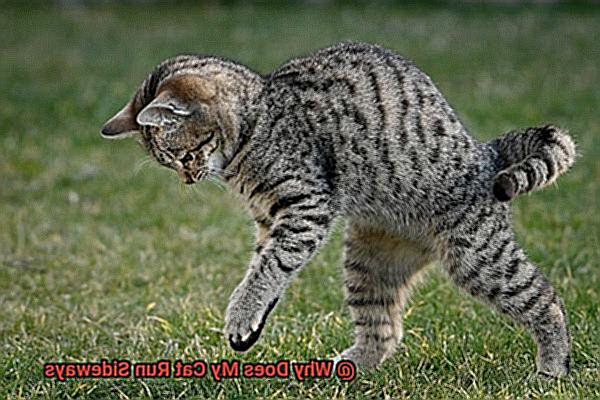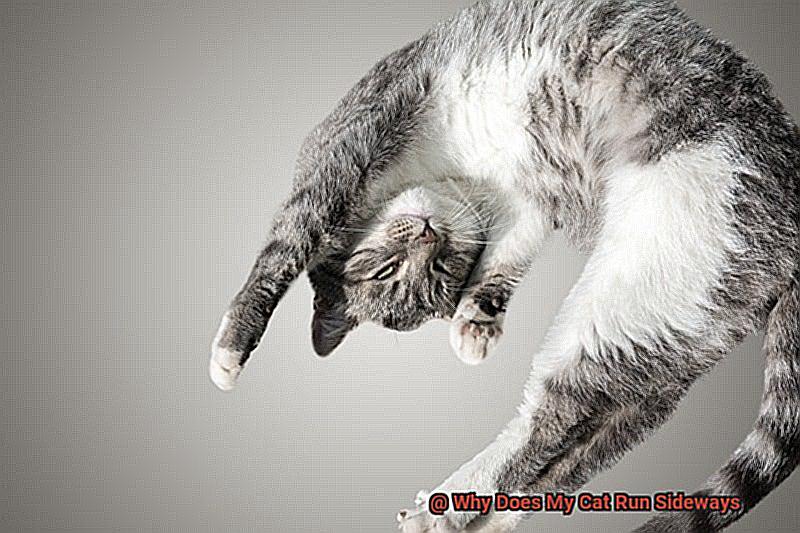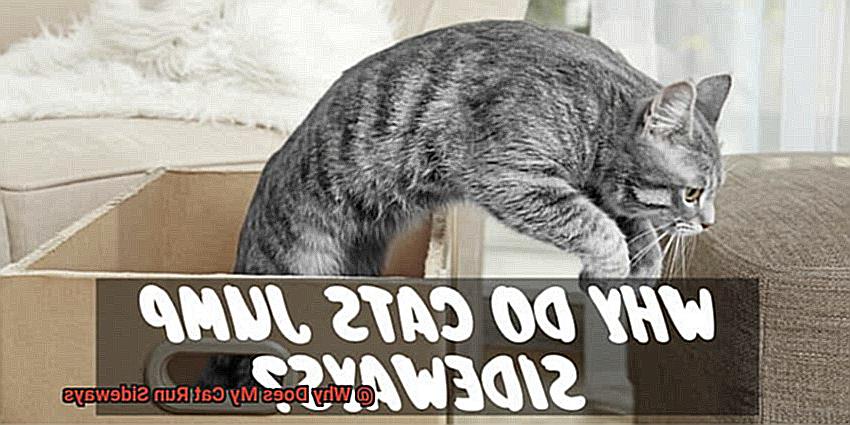Cats are fascinating creatures that have been domesticated for centuries.
They’re beloved pets in many households worldwide, thanks to their charming and entertaining personalities. However, sometimes cats’ behavior can be puzzling, like when they start running sideways.
Have you ever witnessed your furry friend scampering around with a peculiar sideways gait? It’s certainly amusing, but what’s the reason behind it?
A cat may run sideways for various reasons, and it could indicate playful behavior or chronic health issues. Understanding why your cat behaves this way will help you comprehend their needs better and ensure they receive the appropriate care they require.
In this article, we’ll explore whether your cat running sideways is a cause for concern or not. We’ll delve into potential causes of this behavior such as playing, stretching, neurological disorders or vision problems.
If you’re curious to know why your feline companion dashes around like they’re jumping over imaginary obstacles or chasing invisible prey, read on to discover the truth behind their odd behavior.

What is Sideways Running in Cats?
One such behavior that can be quite alarming is sideways running.
This peculiar running style involves the cat running at an angle, with its hindquarters facing one direction while its head and forequarters face another. But don’t worry, there are many reasons why cats run sideways.
For starters, cats are natural born hunters and love to play. Sideways running can be a playful behavior that mimics the movements of prey.
This type of behavior is usually harmless and can provide your cat with much-needed stimulation and exercise. However, if your cat is exhibiting other unusual behaviors or signs of distress when running sideways, it could be due to a medical issue.
Neurological disorders, muscle weakness, or joint pain can all cause cats to run sideways. In these cases, it’s essential to take your cat to the veterinarian for an examination to rule out any underlying health issues.
On the other hand, if your cat is displaying aggression towards another cat or person, sideways running could be a sign of warning. In such cases, it’s crucial to understand your cat’s body language and behavior to prevent any potential conflicts.

As a cat owner, it’s important to know your cat’s habits and seek veterinary attention if you notice any signs of distress or abnormal behavior.
Pent Up Energy as a Reason for Sideways Running
Cats are natural-born predators with a ton of energy that needs to be released.
However, when confined indoors without any physical or mental stimulation, they may become restless and exhibit peculiar behaviors such as sideways running. Sideways running is a way for cats to burn their pent-up energy and imitate hunting behavior.
To prevent sideways running caused by pent up energy, it’s important for cat owners to provide ample opportunities for play and exercise. Interactive toys such as feather wands and laser pointers can help stimulate cats’ natural instincts while also getting them moving.
Additionally, climbing structures and scratching posts can encourage natural behaviors like climbing and scratching. Outdoor exploration is another effective way to help cats release their pent-up energy.
Whether it’s supervised outdoor time in a secure area or taking your cat out for a walk on a harness and leash, allowing them to explore their surroundings and sniff out new scents can help to control their energy levels.
It’s worth noting that pent up energy is a natural response in cats that can result in sideways running.
Signs of Neurological Issues in Cats
One area of concern is their neurological well-being.
Neurological issues in cats can affect their coordination and balance, leading to abnormal movements such as running sideways. However, there are other signs to watch out for that may indicate neurological problems.
If you notice your cat walking in circles, tilting their head, having seizures or tremors, or losing consciousness, it’s time to take them to the veterinarian. In addition, behavioral changes such as aggression, lethargy, and decreased appetite could be indicative of neurological disorders.
Vision problems can also be a symptom of neurological issues in cats, which can impact their overall quality of life. If you do observe any of these signs in your cat, it’s crucial to seek veterinary attention as soon as possible.
Early detection and treatment can make a significant difference in preventing severe complications down the line. The first step in the diagnostic process is a thorough physical examination by a veterinarian.
Further tests such as blood work or imaging tests such as an MRI or CT scan may be recommended. However, don’t wait to seek medical attention for your cat – prompt treatment will result in more treatment options and a healthier outcome.
O7z-Durvafo” >
How to Prevent Your Cat from Running Sideways
While it may seem funny at first, it could be an indication of an underlying medical or behavioral issue. Understanding why your cat is running sideways is crucial to helping them overcome this behavior. Here are five tips and tricks to help prevent your cat from running sideways.
Exercise and Playtime are Key
Cats are natural hunters, and they require plenty of exercise and playtime to keep them healthy and active.
Providing toys and games that challenge their minds and encourage them to move around can help reduce pent-up energy that leads to sideways running.
Ensuring they have access to outdoor spaces where they can run and play is also important.
Create a Calm and Stress-Free Environment
Cats can become anxious or ill when exposed to loud noises or sudden changes in their routine. To prevent sideways running, create a calming environment for your cat by providing a safe sleeping area, regular feeding times, and minimizing stressors. This can include using pheromone products that emit calming scents to reduce stress levels in cats.
Positive Reinforcement Training

Positive reinforcement techniques can be an effective way to discourage your cat from running sideways. Rewarding good behavior with treats or praise can encourage them to continue behaving well while discouraging negative behavior.
Consider Pheromone Products
Pheromone sprays or diffusers can mimic natural feline pheromones that help regulate mood and behavior in cats. Using these products can reduce stress levels and create a calming environment for your cat.
Consult with a Veterinarian
If you have tried all of the above methods and your cat continues to run sideways, it’s essential to consult with a veterinarian. Medical conditions such as neurological disease or spinal abnormalities may be responsible for your cat’s sideways running behavior.
In conclusion, preventing your cat from running sideways requires understanding the root cause of the behavior and taking appropriate steps to address it. By providing enough exercise, creating a stress-free environment, using positive reinforcement techniques, considering pheromone products, and consulting with a veterinarian if necessary, you can help your cat lead a happy and healthy life.
Also Read: Why Do Cats Crab Walk?
Conclusion
In conclusion, cats are fascinating creatures with unique behaviors, such as running sideways.
Although it may seem entertaining at first glance, sideways running could be a sign of underlying health or behavioral issues. It’s crucial to understand the root cause of your cat’s behavior and seek appropriate treatment to ensure their well-being.
Sideways running can serve as both entertainment and education for cats, as they mimic prey’s movements. However, it could also be a symptom of persistent health conditions like neurological disorders or vision impairments.
If you notice any signs of distress or abnormal behavior in your feline friend, it’s best to bring them to the veterinarian for an examination. Pent-up energy is another common reason why cats run sideways.
By knowing your cat’s habits and seeking medical attention when needed, you can help them live their happiest and healthiest life possible.







